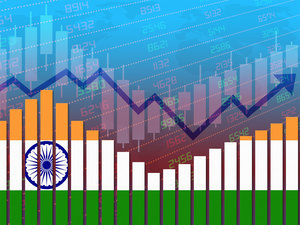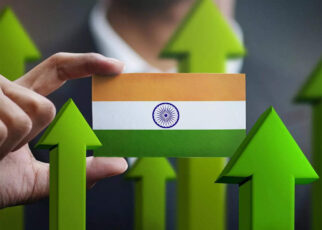The Reserve Bank of India (RBI) stated in an article published in its February bulletin analyzed the 2022–23 annual budget, which was introduced in Parliament by the Finance Minister on January 1, and the monetary policy pursued by the Central Bank, which will pave the way for broader growth in the Indian economy. She explained that the economic recovery in India, which has overcome the challenges of the third wave, is already strengthening. The article published states that the domestic economy is thriving despite various setbacks, including international economic issues.
Private investment is likely to increase significantly in 2022–23 due to the resumption of public investment in the budget for infrastructure development. It contributes to issues such as job creation and demand strengthening.
Multi-model connectivity, India can achieve wide-ranging growth through progress in the transport sector. The Kinetic National Master Plan is crucial in achieving this goal. This is crucial in the progress of infrastructure.
Despite global developments, domestic macroeconomic conditions remain strong. The recovery in economic activity has been rapid in the wake of India’s exit from the third wave.
Both manufacturing and services sectors are expanding on the basis of demand and optimism. Improving consumer and business confidence is also coming together. We hope that employment opportunities will also improve as businesses return to normalcy.
Today the world economy is reeling under the problem of inflation. This is mainly due to rising commodity prices, including crude, and supply shortages. The global macroeconomic conditions are still in a state of extreme uncertainty. Many aspects are still moving towards challenges.
As far as India is concerned, high-cost plans from the government and measures to facilitate business are positive. These are the factors that make India one of the fastest-growing economies in the world.
At the RBI policy meetings earlier this month, the RBI maintained the repo rate at 4% for the tenth consecutive quarter on interest rates on loans to banks. Retail inflation is projected to average 5.3 percent in the 2021–22 fiscal year, down from 4.5 percent in the 2022–23 fiscal year. He opined that it is best to follow a ‘flexible’ approach as long as growth recovery and resilience are needed. The RBI’s recent policy meeting predicts that GDP growth will slow to 7.8 percent in 2022–23 from 9.2 percent in 2021–22.

Budget figures show that central capital expenditure on capital (relative to capital account) increased by 35.4 percent. In the budget speech, the Finance Minister said that the budget allocation for the current financial year was Rs 5.54 lakh crore (Rs 6.03 lakh crore as per revised figures) and would increase to Rs 7.50 lakh crore (2.9 percent of GDP) in 2022-23. She said the allocation for growth and job creation was being increased massively. The minister said the latest allocation (Rs 7.50 lakh crore) is double that of 2019-20 fiscal.
Rapid Economic Development
The Economic Monthly Review Report has said that the Indian economy is set to grow faster than that of the top countries due to various measures taken by the government in the new budget (2022–23 financial year). The report analyzes that the current year could also be marked by a plan for what the post covid–19 world economy will look like.
As far as India is concerned, the manufacturing and construction sectors will be the drivers of growth. The report analyzes that the increase in government spending on PLI and infrastructure will pave the way for the growth of the domestic economy. Considering some of the key points in the report.
The agricultural sector is making steady progress in net seed acreage and crop diversification. This will strengthen the situation of food stocks in the country. At the same time, factors such as minimum support prices for farmers and income transfers through the Prime Minister’s Kisan scheme will benefit the sector.

The International Monetary Fund (IMF) has also ranked India first in terms of rapid growth. In early January, the International Monetary Fund (IMF) slashed India’s growth forecast for the current financial year (2021–22) by 50 basis points (100 basis points). In October last year, it cut its expectations to 9.5 percent, the latest 9 percent. However, this level of growth is also the highest in the world.
Despite the third wave of challenges in the country, overall economic activity has survived. Many high-frequency indicators, such as electricity consumption, manufacturing, purchasing, manufacturing index, exports, and e-way bills, are performing well. This reflects the strength of the growth recovery.
After the uncertainty and anxiety caused by the covid-19 virus have been removed from the minds of the people, consumption will pick up. There is ample opportunity for private investment to increase production in line with growing demand.
Internationally, apart from geographical, political, and economic factors, the Indian economy has many positive aspects in 2022–23.
Also Read: By 2050, half of the world’s population would not have access to water
Discover more from Thenewsdoor
Subscribe to get the latest posts sent to your email.





